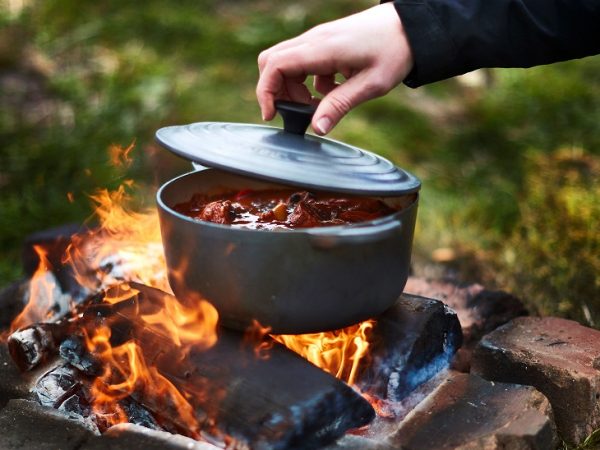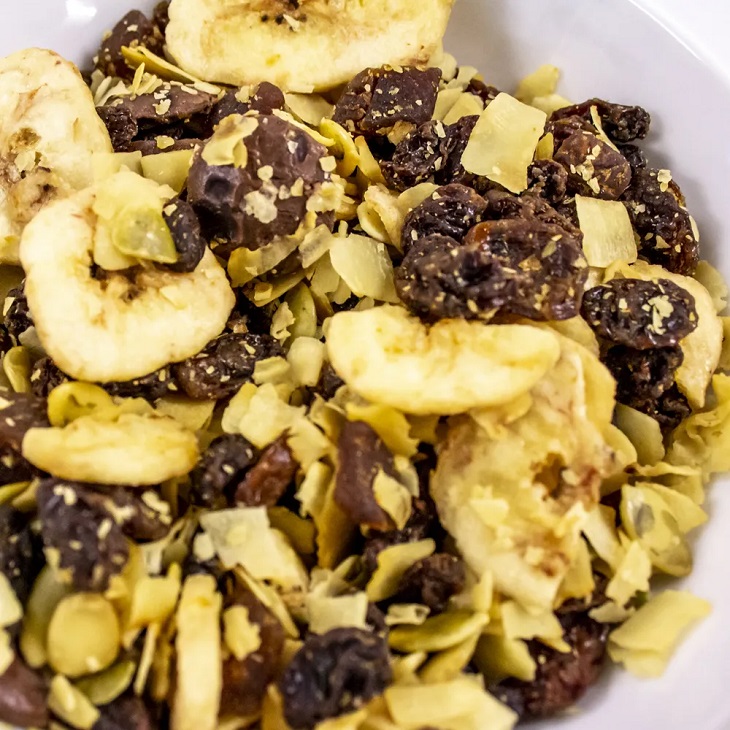12
Nov

If there is one thing that many outdoor enthusiasts look forward to after a long day of hiking and exploring, it’s a tasty and nourishing meal to replenish their energy and lift their spirits. Camping food is often one of the highlights of the experience. However, when selecting camping food, apart from taste and nutrition, it’s crucial to prioritise convenience, portability, and weight. This is where camping food packs enter the picture. They’re popular among outdoor enthusiasts for several reasons.
We all know that investing in lightweight gear when camping is key, and the same goes for food. Carrying lighter food means less strain on your body and helps conserve energy, especially on longer treks or uphill climbs.
Options like dehydrated or freeze-dried camping food packs are lightweight due to the processes used to remove moisture while retaining nutrients and flavour. Water can make up a significant portion of food’s weight, but removing it results in a much lighter final product.
Next, camping food pouches are frequently portioned for single servings, providing just the right amount of food. You only carry what you need for each meal, rather than an entire package’s worth of food. This makes single-serving prepacked meals for camping the ideal solution for conscious backpackers who aim to avoid food waste and reduce weight.
Furthermore, compared to conventional heavy and bulky containers like canned goods and glass jars, camping food pouches are often made of lightweight, flexible materials like nylon or polythene. This also reduces weight without compromising durability. Prepacked camping meals can also be designed with thoughtful features like resealable tops or spouts for easy pouring, which also enhances convenience without adding unnecessary weight or bulk to your bag.
Besides being easy to transport and organise, hiking food packs are also easy to prepare. Since the food is already cooked, you’re not truly cooking it in the conventional sense. Instead, all you have to do is add hot or boiling water to the pouch, cover it, and let it sit for 10–20 minutes to rehydrate fully.
Next, the design of camping food pouches also enhances their convenience. They usually come in stackable or resealable food pouches that can be neatly organised in a backpack, allowing for better use of available space. This means that you can fit more meals into your backpack without wasting room which is not the case with heavier and bulkier containers that may not fit as well in a packed bag.
Speaking of organising food pouches in your backpack, you can categorise meals by type (breakfast, lunch, dinner, snacks) or dietary preference, making meal planning straightforward. Also, once empty, stackable food pouches can often be flattened or folded, saving even more space in your bag.

Camping doesn’t have to mean sacrificing delicious, multi-course meals when you have complete food packs. Whether you prefer to start the day with a warm bowl of instant soup or flavoured instant oatmeal, top up your energy during the day with a smoothie or treat yourself with a creamy and rich chocolate mousse, these packs are usually designed to cover all your meals, including breakfast, dinner, and dessert.
Having different meals included in these all-in-one camping food packs means less planning and packing. You can simply grab a few packs for your trip and enjoy delicious and varied meals on the go.
Furthermore, comprehensive food packs are usually balanced in terms of nutrition. They include a good source of proteins, carbohydrates, fats, and minerals to provide balanced nutrition. However, if possible, it’s a good idea to add fresh fruits, snacks, or other products to your meals to improve nutritional balance when camping.
Nowadays many brands offer a selection of camping food packs that cater to different dietary preferences and restrictions. For instance, vegetarian options include plant-based proteins like beans, lentils, and tofu. Vegan meals are also common, ensuring no animal products are included in the pack.
Next, to ensure that people with celiac disease or gluten sensitivity can eat a range of foods while camping without worrying, many brands provide gluten-free options. Instead of wheat-based ingredients, their products usually contain gluten-free grains like buckwheat, rice, quinoa, or corn.
For campers and backpackers who want to eat organic options, there’s an impressive variety available to match their preferences. These organic, sustainably sourced camping meals are usually made with ingredients grown without pesticides or synthetic fertilizers and contain limited additives and preservatives.
People with severe allergies can also enjoy camping food packs because many brands are now dedicated to producing meals that are safe and free from common allergens like peanuts, dairy, and others. This inclusivity makes it easier to find nutritious and delicious meals that meet specific dietary needs while exploring the outdoors.